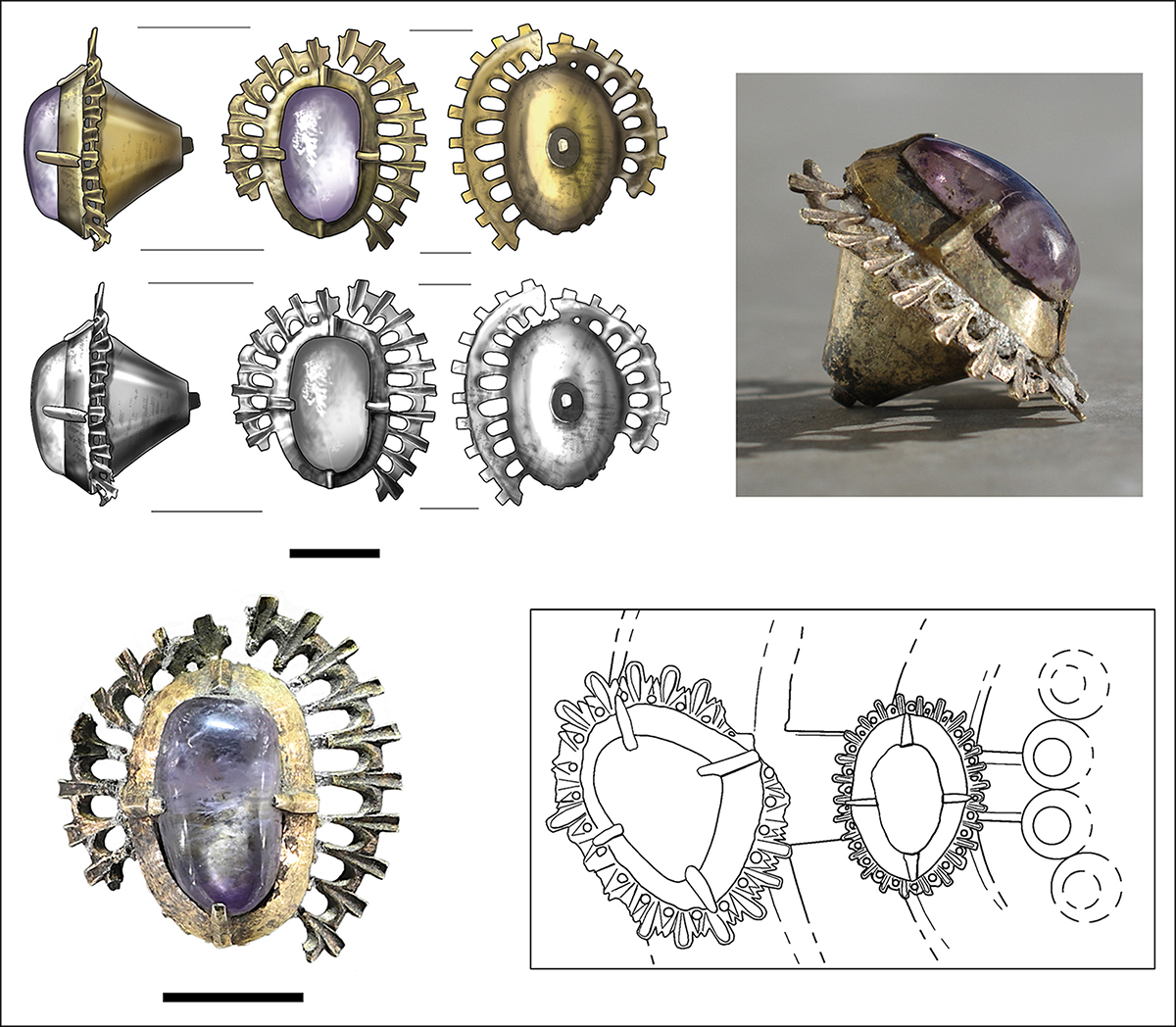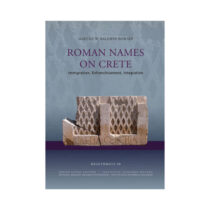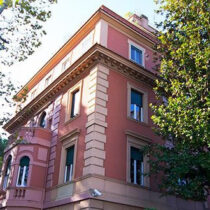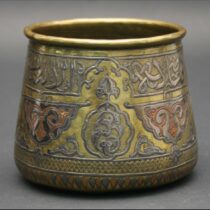A rare silver-gilt jewel featuring an amethyst has been discovered in the moat of Castle Kolno, located in Stare Kolnie, southwestern Poland. The piece was found buried in the moat’s sediment between wooden posts that once formed part of a bridge. Based on tree-ring dating and soil analysis, the jewel dates to somewhere between the early 14th and mid-15th centuries, when the castle met its destruction.
Castle Kolno was originally built in the 13th century by Duke Bolesław III of Brzeg. It later changed hands several times after being sold to local lesser nobility. In 1443, it was burned down during internal conflict between rival Silesian duchies in the aftermath of the Hussite Wars. Archaeologists have been excavating the site since 2010, uncovering a wealth of artifacts—mainly military items and ceramic pieces—from the castle’s peak period in the 14th and 15th centuries.
Despite the castle having been inhabited by the wealthy, discovering precious jewelry in such contexts is extremely uncommon. Items made of gold and silver are typically found in graves or hidden treasure hoards, not in everyday settlements or residences, even noble ones like castles. The fact that this jewel was found in the moat suggests it may have been accidentally lost by its owner while crossing the bridge.
The amethyst was confirmed using Raman spectroscopy to analyze its molecular makeup, while X-ray fluorescence identified the metal as silver coated with a thin layer of gold. The stone, a domed cabochon amethyst, is set in a decorative design resembling rays or palmette petals. On the back, a silver pin and traces of lead solder suggest that the piece was once part of a larger accessory—probably a brooch, but it could also have belonged to something more ornate, such as a coronet.
This style of gemstone setting was part of an international artistic trend during the 13th century. Similar decorative patterns appear around reused Roman cameos on the crown of King Sancho IV el Bravo, found in his tomb in Toledo, on golden coronets from Wawel Castle in Kraków, and on an imperial brooch discovered in the Środa Śląska treasure. Later examples, like a 14th-century silver-gilt brooch from Split Cathedral’s treasury, also reflect this motif. Whether on high-end or slightly more modest jewelry, such settings were symbolic of medieval aristocratic identity—an elite that continued to frequent Castle Kolno even after it had passed to minor nobles.





